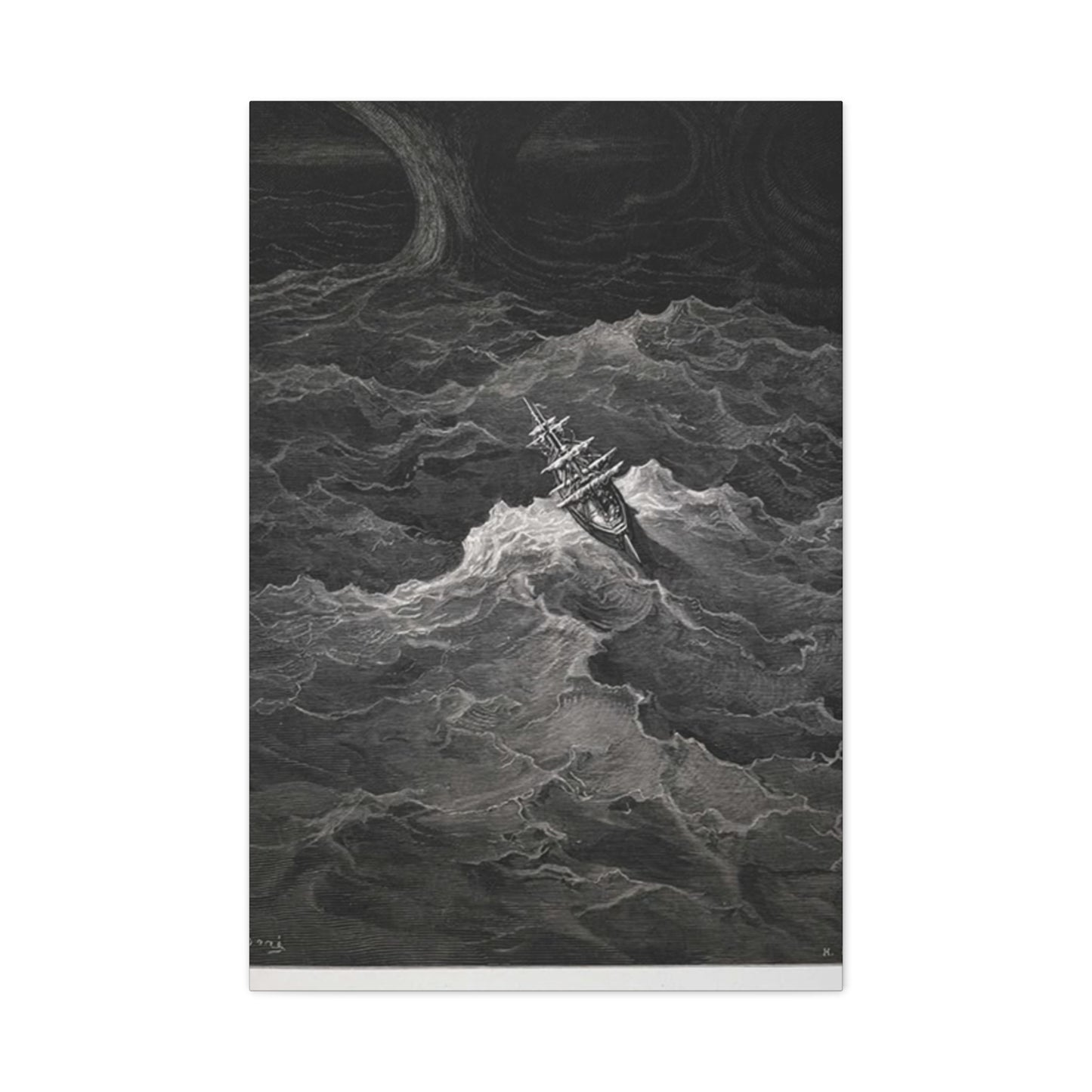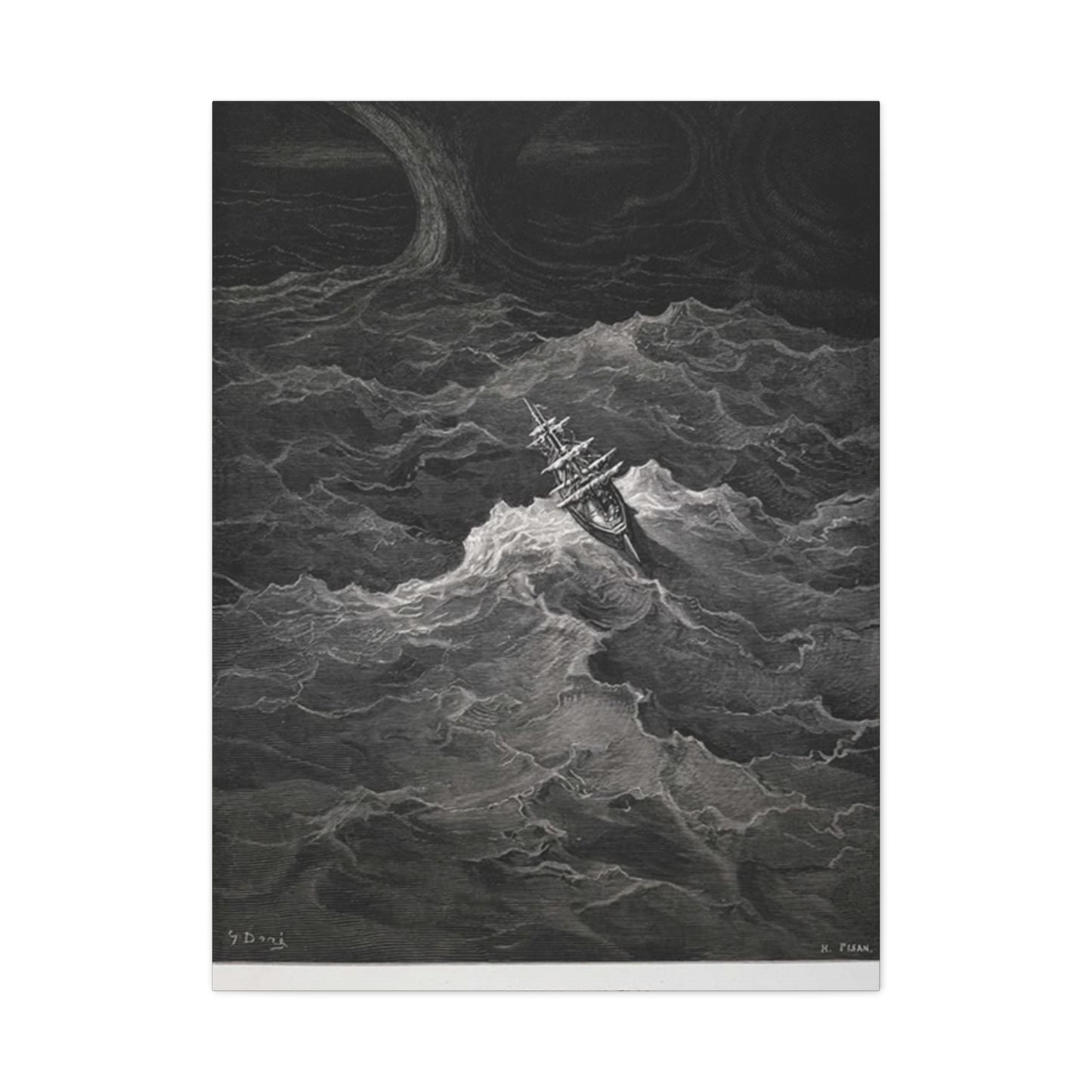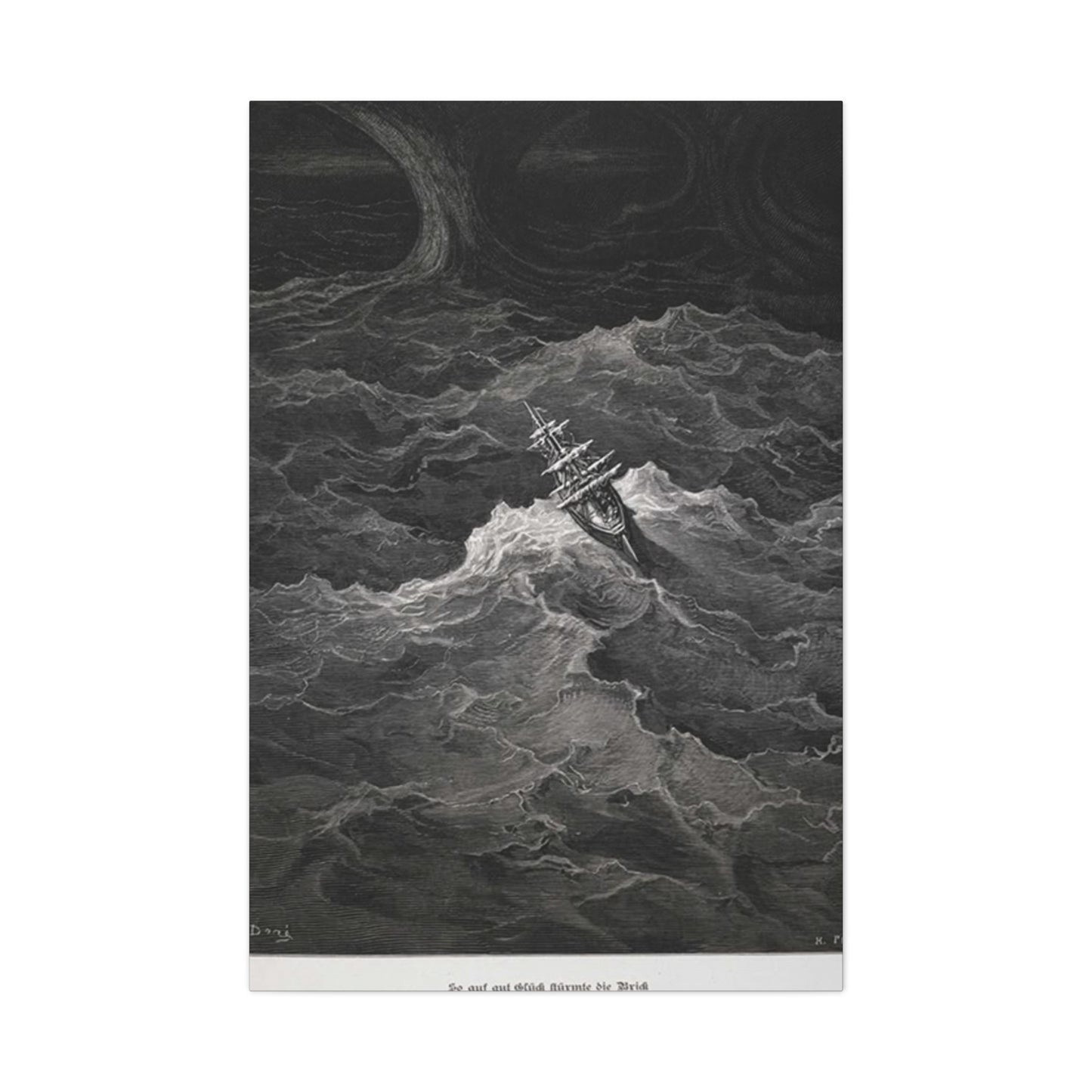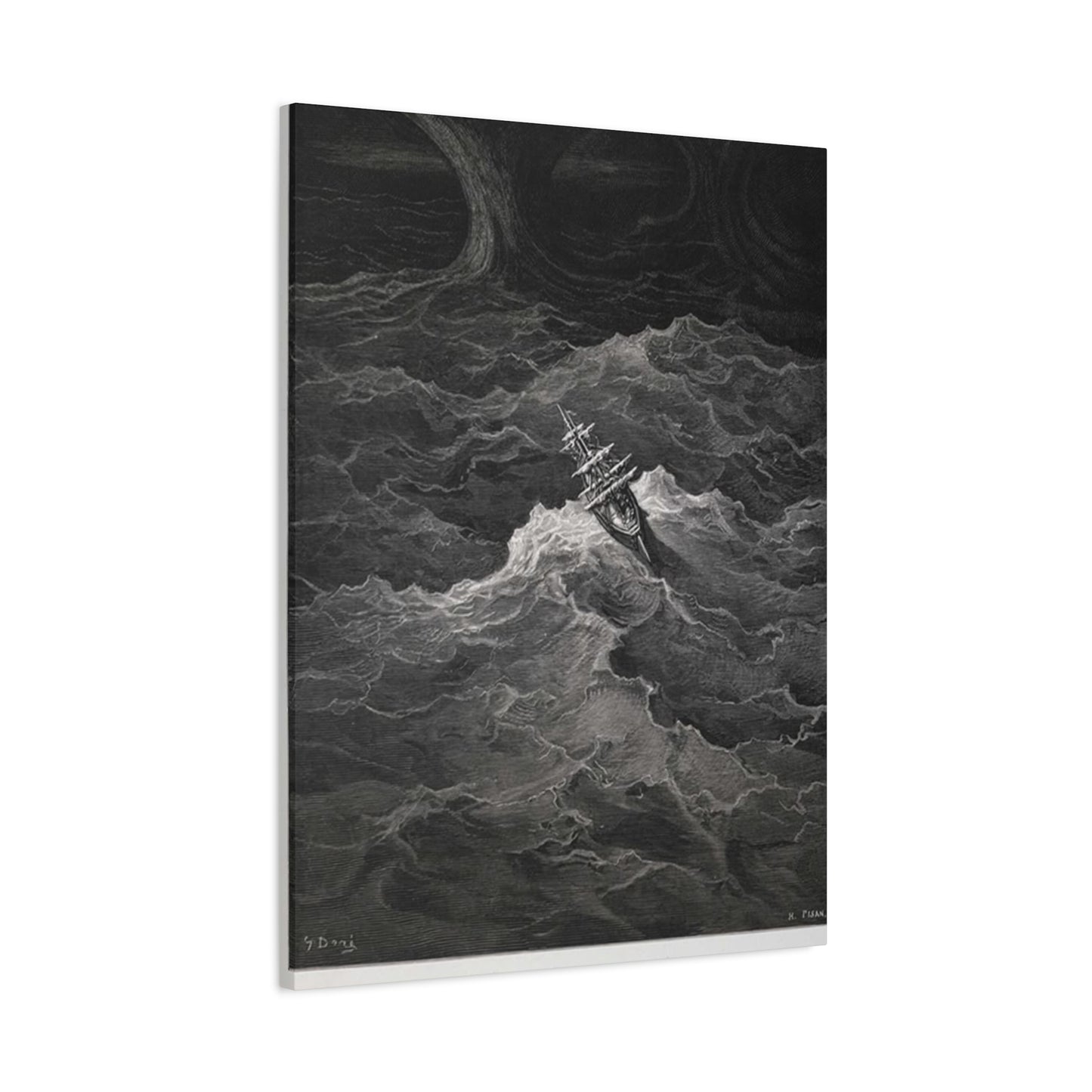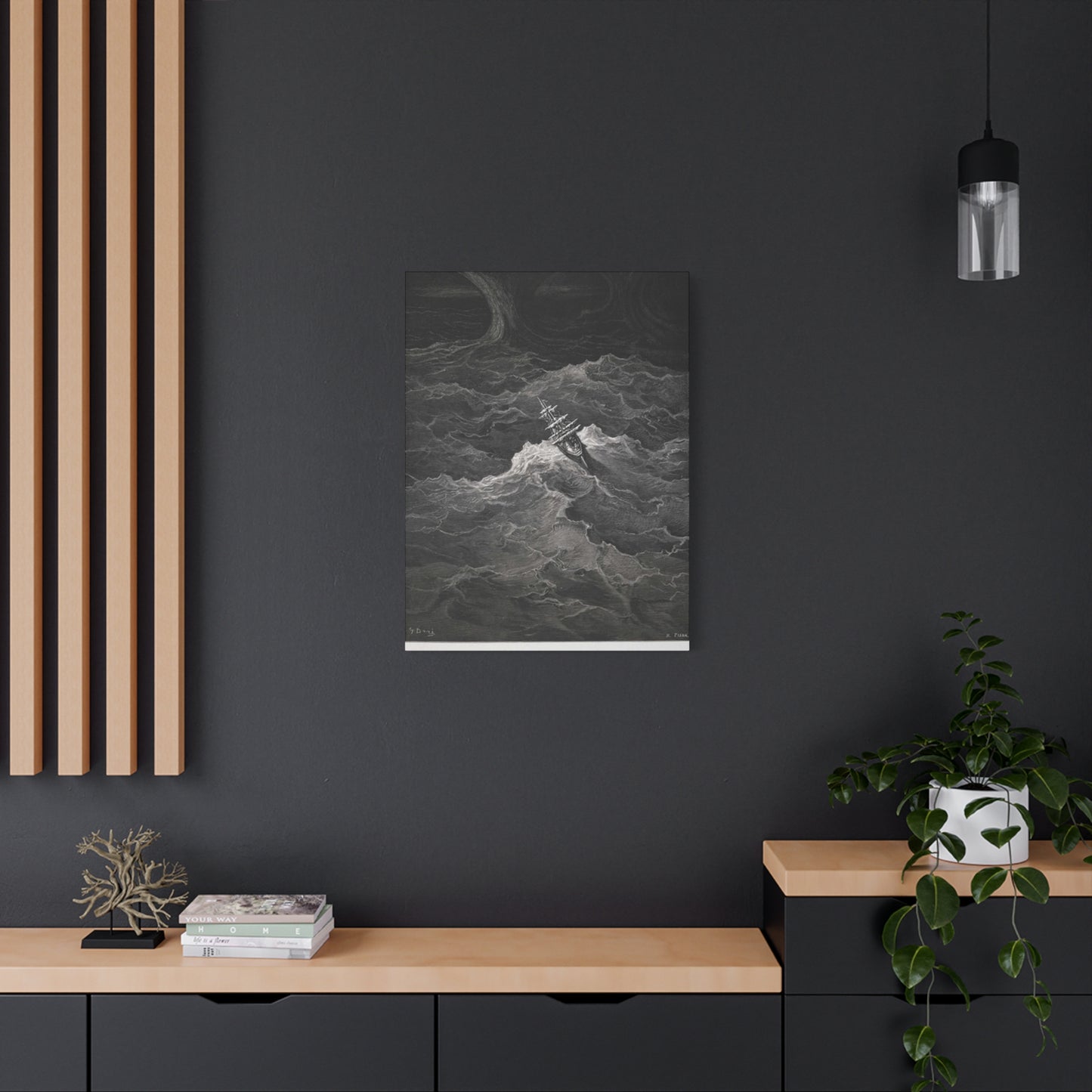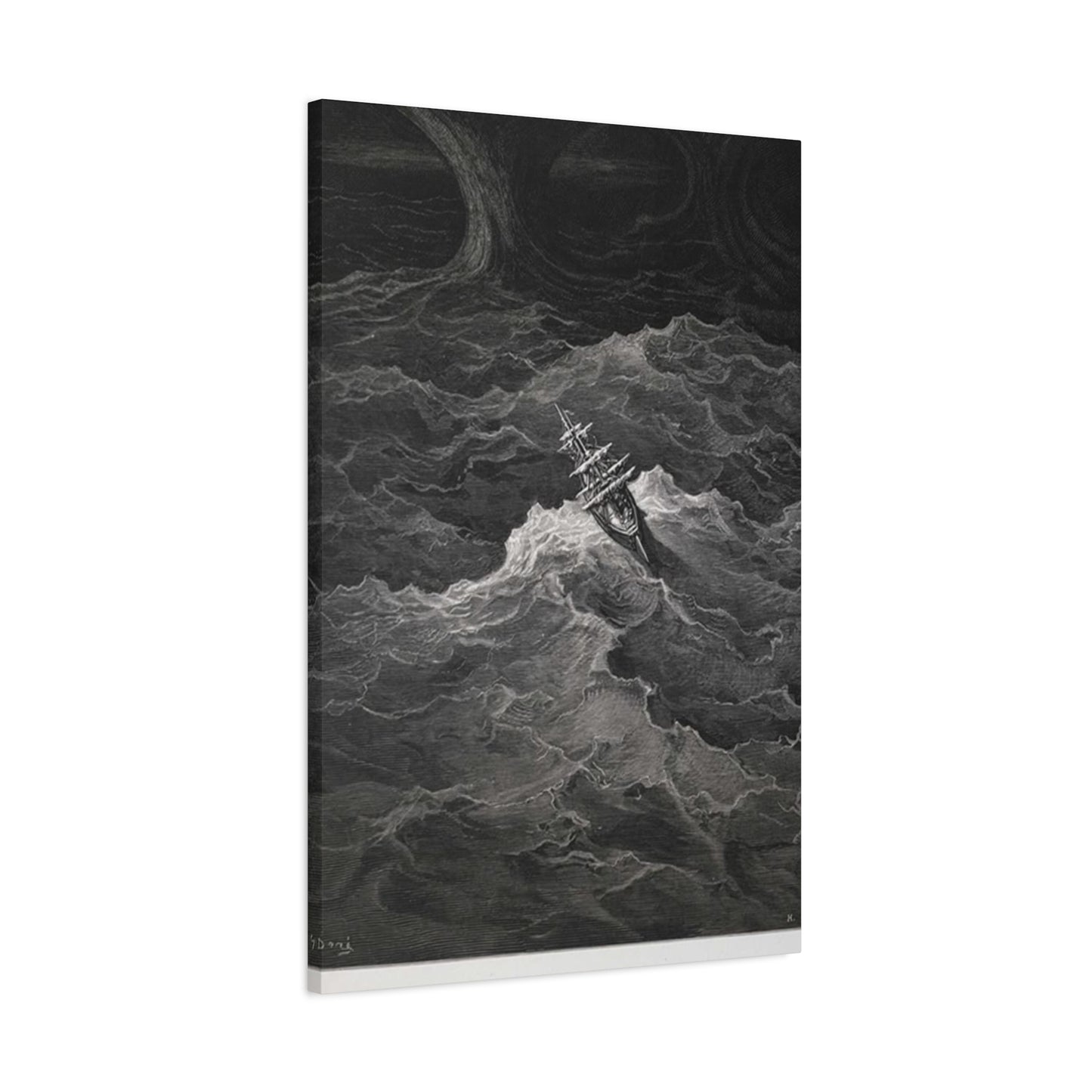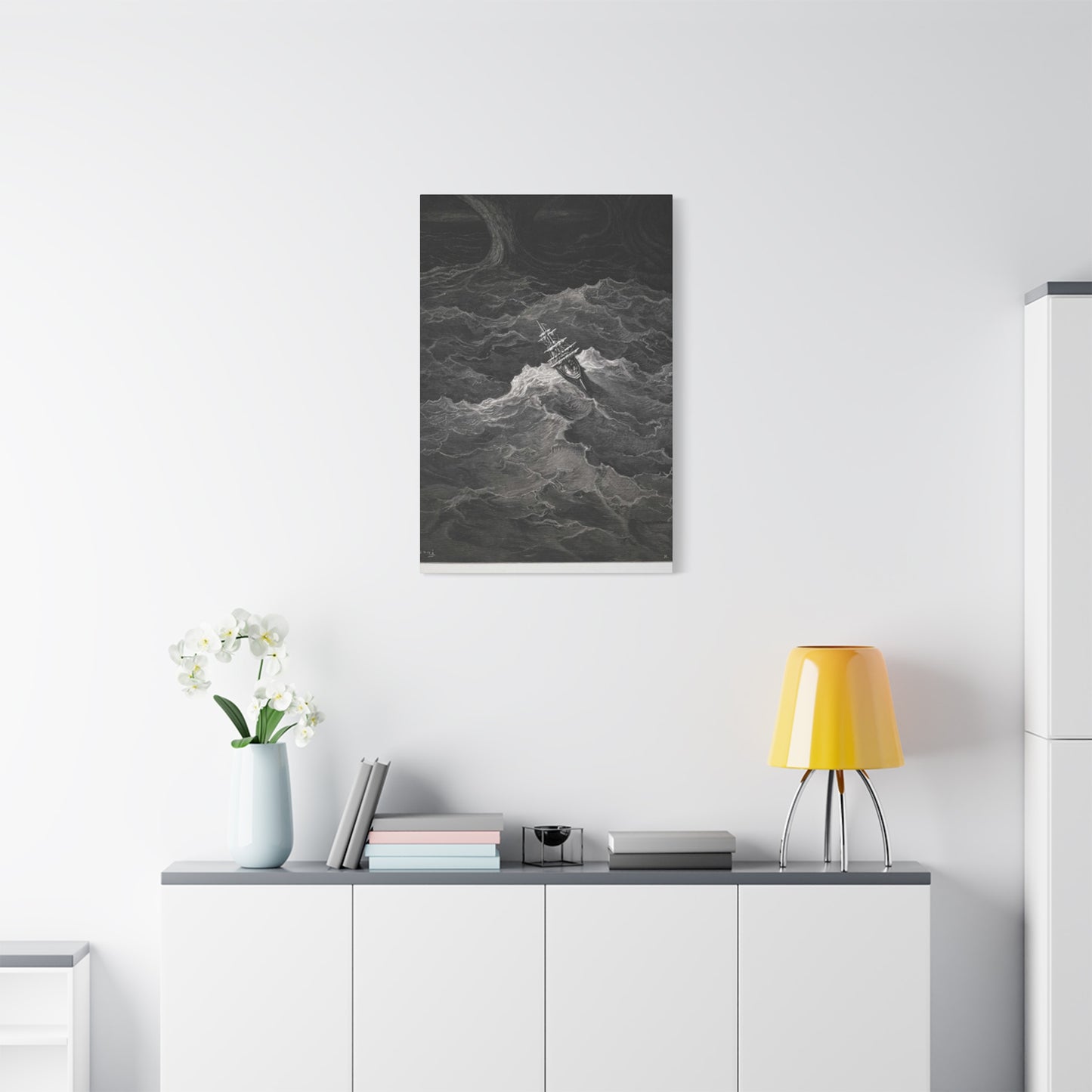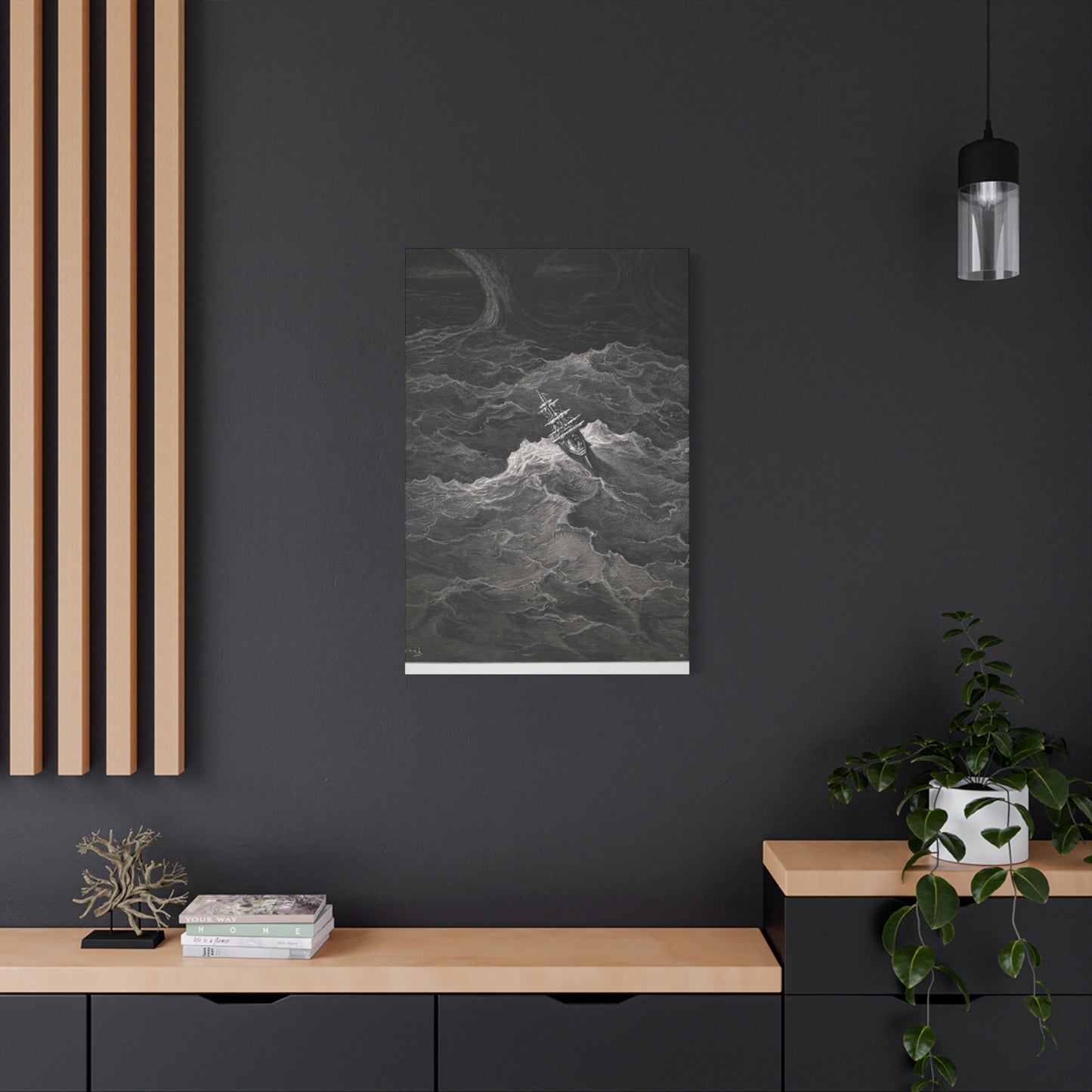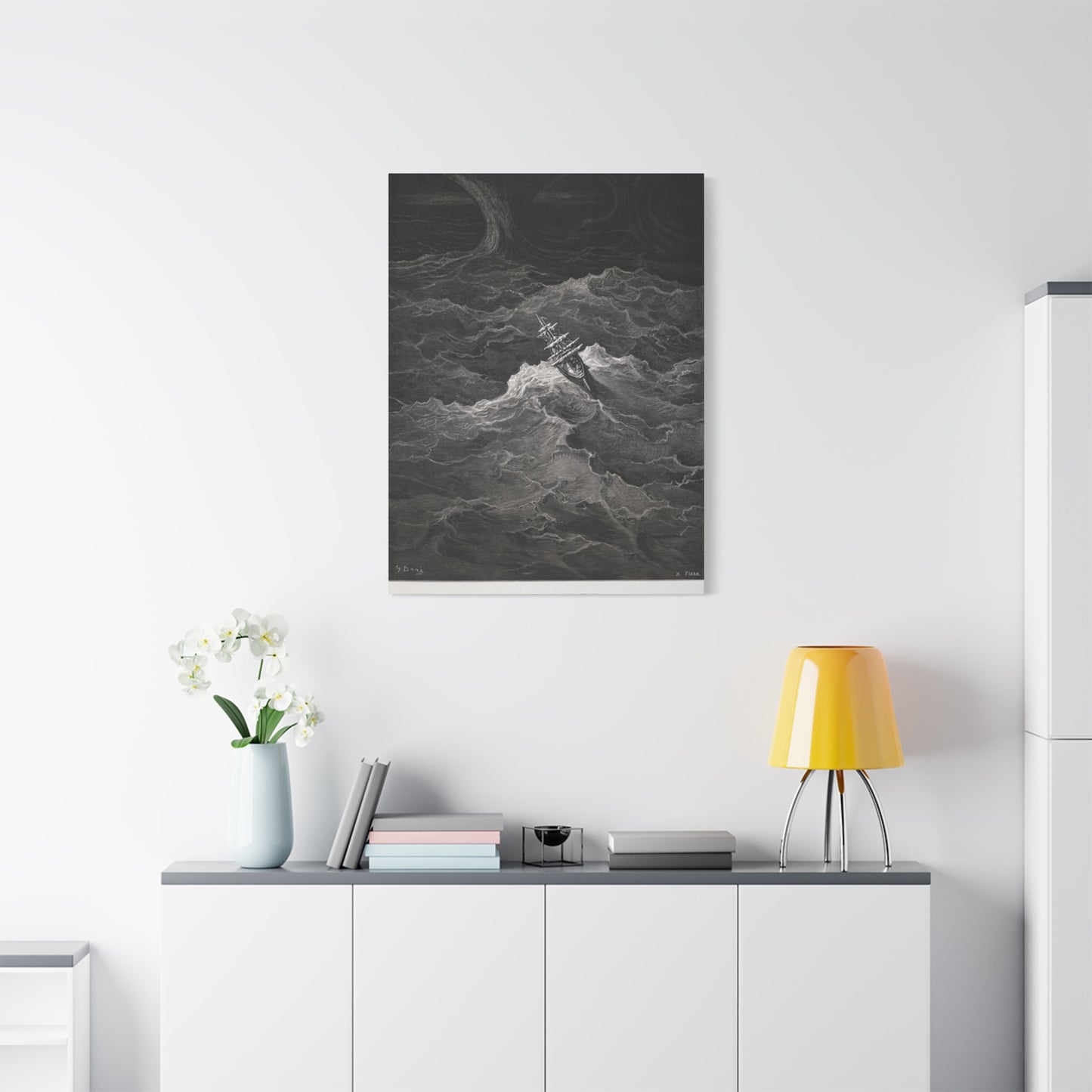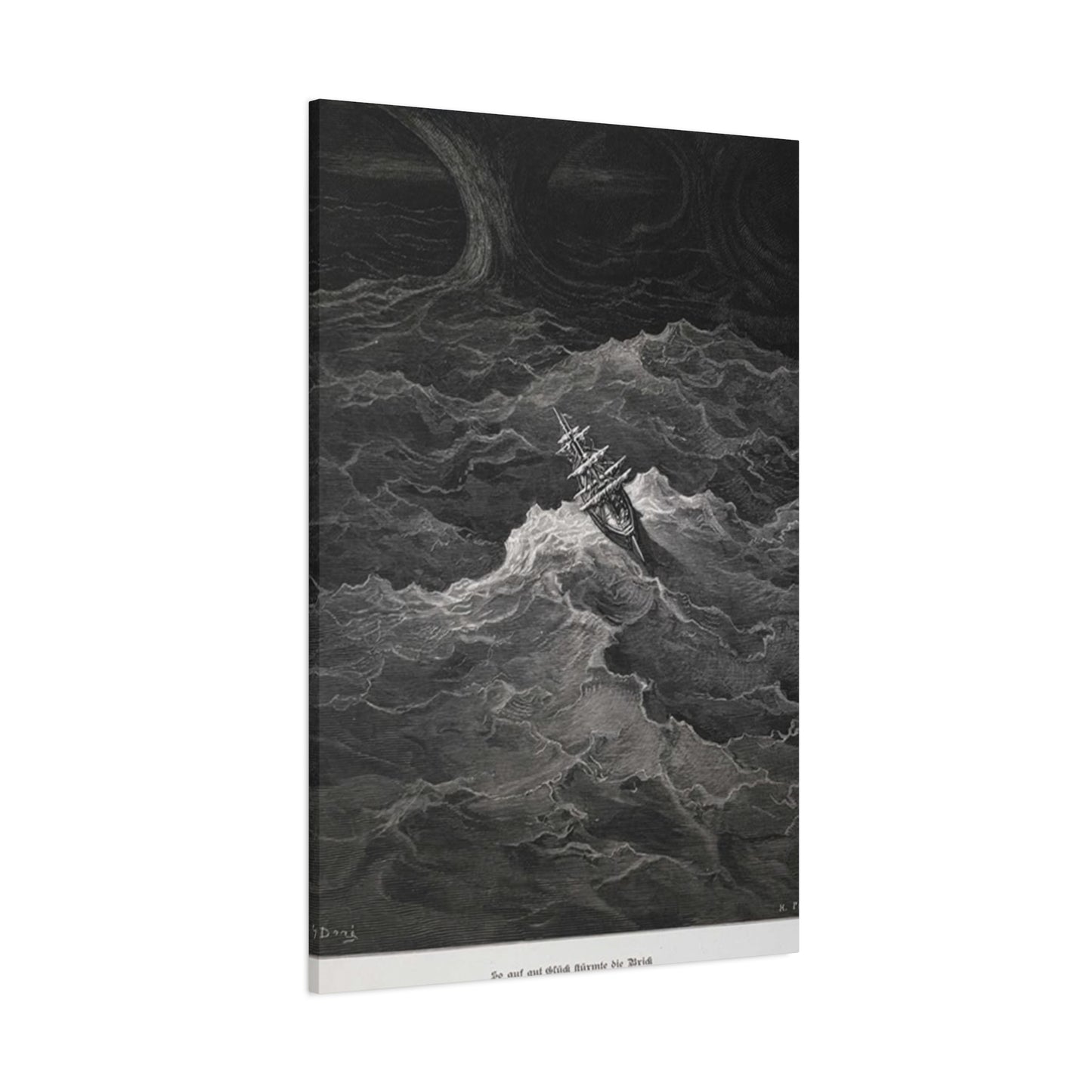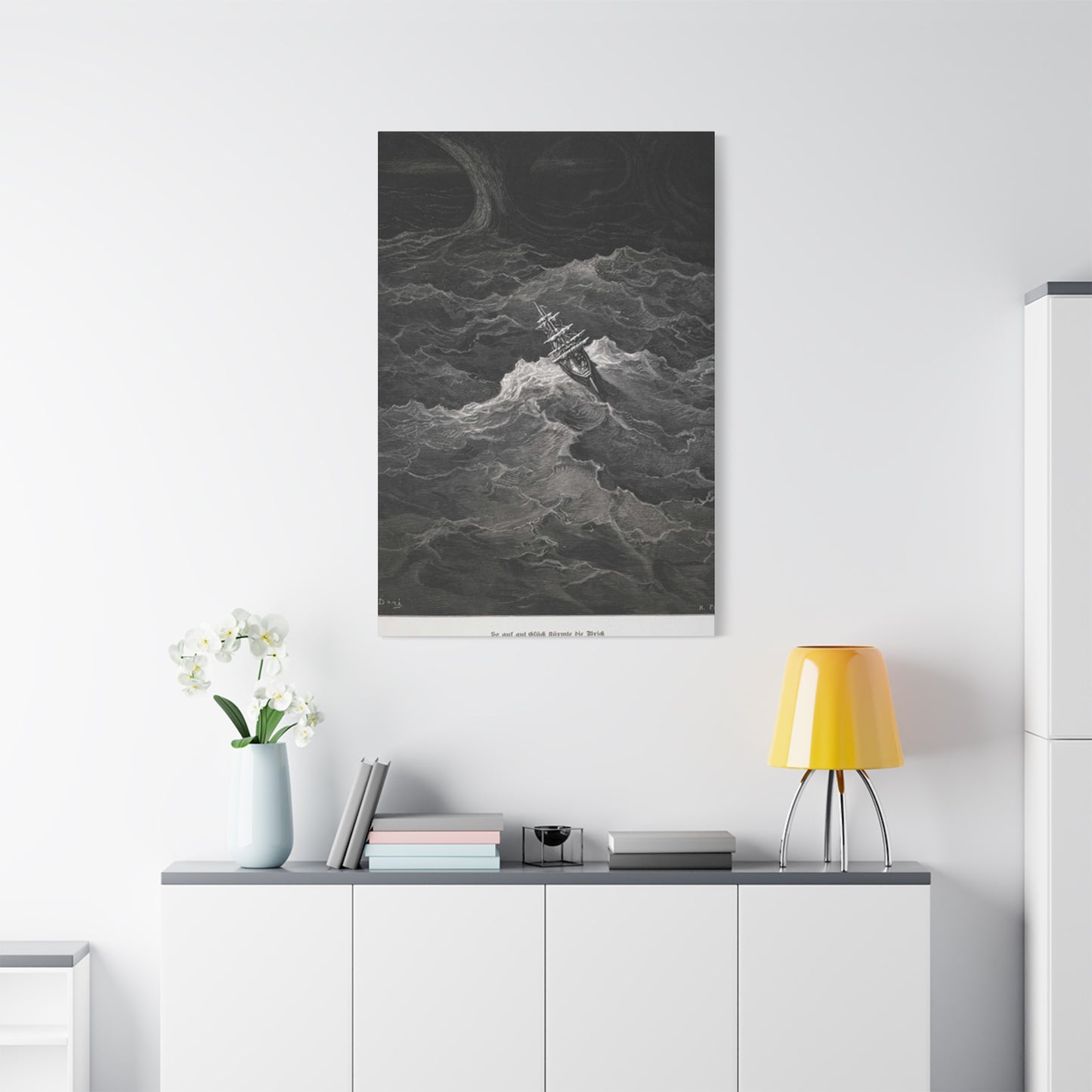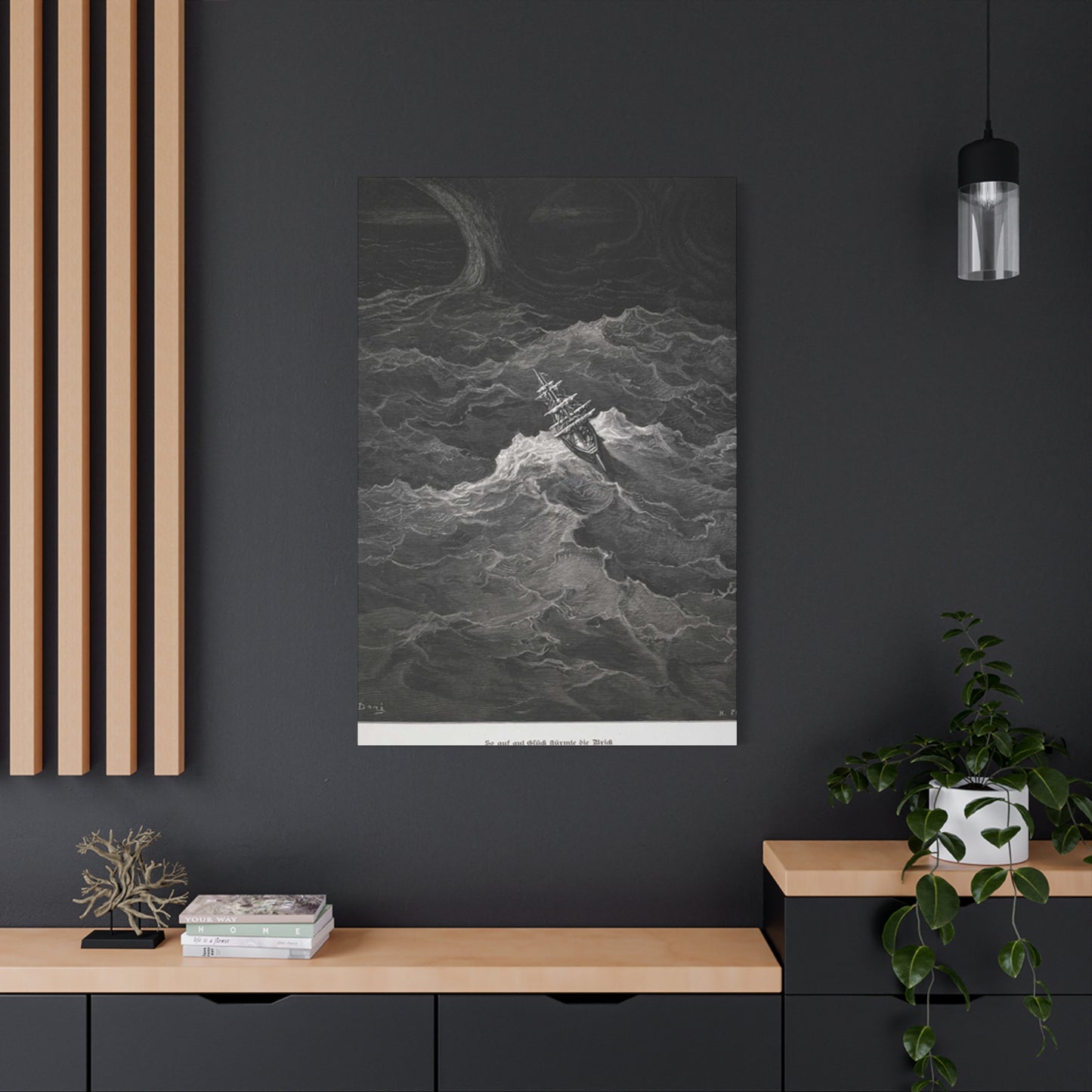Sailing Ship in Dark Drawing Wall Art: The Ultimate Guide to Maritime Decor and Nautical Aesthetics
The allure of nautical imagery has captivated humanity for centuries, and the sailing ship in dark drawing wall art canvas prints represents a perfect fusion of historical significance and modern aesthetic sensibility. These dramatic pieces transport viewers to an era of exploration, adventure, and the raw power of nature. The depiction of vessels navigating through mysterious, shadowy waters creates an atmosphere of intrigue and contemplation that resonates deeply with contemporary audiences seeking meaningful decoration for their living spaces.
Maritime artwork has evolved significantly from traditional oil paintings found in sailor's taverns and captain's quarters to sophisticated canvas prints that grace modern homes, offices, and commercial spaces. The dark drawing style particularly appeals to those who appreciate dramatic contrast, moody atmospheres, and artwork that tells a story without overwhelming a space with bright colors. This aesthetic choice reflects a broader trend in interior design toward more subdued, contemplative spaces that encourage reflection and provide visual interest without distraction.
The technical execution of these pieces requires careful attention to light and shadow, creating depth through subtle gradations of tone rather than relying on vibrant hues. Artists who specialize in this style understand how to use negative space effectively, allowing the darkness to enhance rather than obscure the subject matter. The sailing vessel emerges from the gloom like a memory or a dream, suggesting both vulnerability and resilience as it confronts the vast, unknowable expanse of the ocean.
The Timeless Allure of Maritime Majesty
The fascination with sailing ships is woven into the very fabric of our collective history. For centuries, these vessels were the engines of discovery, the conduits of trade, and the instruments of power that connected and reshaped the world. They represent a pivotal era of human endeavor, an age when courage and knowledge of the winds and stars were the only things separating a crew from oblivion. This rich historical context is a significant source of their power as an artistic subject. A depiction of a tall ship is never just a picture of a boat; it is a portal to an era of adventure, risk, and monumental change. It evokes the spirit of legendary explorers charting unknown continents, the grit of sailors enduring grueling transatlantic voyages, and the intricate dance of naval battles that decided the fates of empires.
This inherent narrative weight is what gives sailing ship art its enduring appeal, allowing it to resonate on a level far deeper than mere aesthetics. It speaks to the part of us that yearns for freedom, that is stirred by tales of bravery, and that respects the raw ambition it took to cross an ocean with nothing but wind as a guide.Furthermore, the sailing ship is a masterpiece of form and function, a thing of immense visual complexity and grace. The elegant curve of its hull, the towering geometry of its masts and rigging, and the dynamic shape of its sails in the wind create a composition that is both powerful and beautiful.
Artists have long been drawn to this interplay of man-made structure and natural force. In art, the ship becomes a character in its own right, a protagonist set against the vast, often featureless backdrop of the sea and sky. Its presence introduces a focal point, a story, and a sense of scale that highlights the immensity of the natural world. Whether depicted in meticulous detail, with every rope and plank rendered with precision, or captured in a more impressionistic style that emphasizes movement and atmosphere, the sailing ship is a subject of endless artistic possibility. This visual appeal, combined with its profound historical and symbolic weight, ensures its place as a classic and revered motif in the world of art and decor, capable of bringing a sense of history, adventure, and timeless elegance to any space.
Capturing the Abyss: The Power of a Darker Palette
Choosing a piece of art that features a sailing ship in a dark, atmospheric setting is a deliberate and powerful aesthetic choice. It moves away from the cheerful, almost recreational feel of sunny maritime scenes and embraces a more dramatic and contemplative mood. The power of a darker palette—rich in charcoals, deep indigos, shadowy grays, and stark blacks—lies in its ability to evoke a profound sense of mystery and the sublime. The sublime, an aesthetic concept that describes beauty tinged with an element of terror or awe, is perfectly captured in the image of a lone ship navigating a dark or stormy sea. This style of art does not shy away from the ocean's formidable nature; it celebrates it.
The darkness highlights the ship’s vulnerability and, in doing so, emphasizes its incredible resilience. It becomes a potent symbol of strength in the face of overwhelming odds, a single point of light and order in a world of beautiful chaos. This dramatic tension is what makes the artwork so compelling and emotionally resonant.Artistically, a dark palette allows for the masterful use of contrast, or chiaroscuro, to create depth, drama, and focus. The artist can use the limited light—perhaps the pale glow of the moon breaking through the clouds, the lonely flicker of a lantern on deck, or the white foam of a crashing wave—to guide the viewer's eye and sculpt the form of the ship out of the surrounding blackness.
This technique imbues the scene with a cinematic quality, making it feel like a single, frozen moment in an epic tale. The darkness itself is not empty; it is filled with unseen potential, suggesting the vast, mysterious depths below and the infinite, star-strewn sky above. This approach encourages introspection. Unlike a bright, clear scene that presents all its information at once, a dark drawing invites the viewer to look closer, to imagine the story behind the image, and to connect with the feelings of solitude, determination, and quiet courage that it represents. It is an art form that speaks to the soul, creating a space for quiet reflection and an appreciation for the beautiful struggle that defines the human journey.
Integrating Nautical Art into Your Living Space
Incorporating a piece of dark sailing ship wall art into your home is a sophisticated way to introduce a powerful narrative and a timeless sense of style. The key to successful integration is understanding its role as a commanding focal point. Due to its dramatic nature, this type of artwork is best placed where it can anchor a room and command attention. Consider hanging a large piece above a fireplace mantel, behind a sofa in the living room, or on the main wall of a study or home office. In these locations, it can set the entire tone for the space, creating an atmosphere of contemplation, elegance, and worldly wisdom. The moodiness of the art lends itself particularly well to rooms designed for relaxation and thought, such as a library, a den, or a quiet reading nook.
The image of a solitary ship on a dark sea can foster a sense of calm focus, making it an ideal companion for work or deep thought. When choosing a piece, consider the scale of the room; a larger space can handle a significant, oversized canvas that makes a bold statement, while a smaller room might benefit from a more modestly sized, intricately detailed drawing that invites closer inspection.The surrounding decor should complement the artwork, not compete with it. A sailing ship in a dark drawing pairs exceptionally well with a range of interior design styles. In a traditional or classic interior, it can be enhanced by rich wood furniture, leather armchairs, and brass accents, creating the feel of a historic captain's quarters or a venerable explorers' club.
For a more modern or minimalist space, the art can provide a striking point of contrast. A simple black or dark wood frame will allow the artwork's stark beauty to stand out against clean lines and a neutral color palette. In an industrial-style loft with exposed brick and metal, the raw, elemental nature of the art feels perfectly at home. Lighting is also crucial. Instead of flooding the artwork with bright, ambient light, use a dedicated picture light or a directional spotlight. This will accentuate the dramatic contrasts within the piece, making the light elements appear more luminous and allowing the shadows to retain their mysterious depth, effectively turning the wall art into a captivating centerpiece.
Beyond the Canvas: Materials and Mediums
The evocative theme of a sailing ship in darkness is not confined to a single artistic medium. Its power can be translated through a variety of materials, each offering a unique texture, mood, and interpretation. Understanding these different mediums can help you choose a piece that perfectly aligns with your personal taste and the desired aesthetic of your space. Traditional charcoal drawings are perhaps the purest expression of this theme. Charcoal offers a rich, velvety blackness and the ability to create soft, atmospheric smudges and sharp, dramatic lines. A charcoal piece feels raw, immediate, and elemental, perfectly capturing the gritty reality of a storm-tossed voyage. Similarly, ink drawings and etchings provide a different kind of intensity.
Using fine lines and cross-hatching, an artist can build up deep shadows and intricate details, from the complex web of the ship’s rigging to the churning texture of the water. The permanence and precision of ink lend a sense of historical authenticity, reminiscent of old maritime charts and illustrations found in classic adventure novels.Moving beyond works on paper, this theme is powerfully rendered in oil or acrylic paintings. A painter can explore the subtle gradations of a stormy sky or the deep, translucent blues and greens of a moonlit ocean. The thick texture, or impasto, of oil paint can be used to give the crashing waves a tangible, three-dimensional quality, while thin glazes can create an ethereal glow, suggesting moonlight filtering through mist.
For a more contemporary or sculptural approach, consider wall art made from other materials. A piece crafted from reclaimed wood, with the image of the ship burned or carved into its surface, can bring a rustic, tactile quality to the theme. Metal wall sculptures can offer a sleek, modern interpretation, using polished and patinated surfaces to play with light and shadow. Even high-quality giclée prints on canvas or fine art paper can beautifully reproduce the depth and detail of an original work, making this powerful aesthetic accessible at various price points. Each medium tells the same story of the shadowed voyage but in a slightly different dialect, allowing you to find the perfect voice for your home.
The Symbolism of the Solitary Ship
A work of art depicting a solitary sailing ship on a dark sea is laden with rich, multilayered symbolism that speaks directly to the human condition. On the most fundamental level, the ship itself represents a journey. It is not a static object but a vessel of purpose, moving from a known point of origin toward an unseen destination. This immediately connects with our own lives, which we often perceive as a personal voyage through time, filled with challenges, discoveries, and the constant navigation of changing circumstances. The ship becomes a metaphor for the self, for humanity, or for a particular endeavor, bravely pushing forward into the future. The vast, dark ocean that surrounds it symbolizes the unknown.
It is the great mystery of life, the future we cannot predict, the challenges we have yet to face, and the immense, powerful forces of nature and fate that are beyond our control. The darkness of the water and sky heightens this sense of uncertainty and risk, reminding us that our journey is not always easy or clearly illuminated.Within this context, the ship's solitary nature is profoundly significant. It represents independence, self-reliance, and the courage to forge one's own path. However, it can also evoke feelings of isolation and loneliness, tapping into the existential reality that every individual must ultimately navigate their own life's journey. This duality is what makes the image so compelling; it acknowledges both the strength and the vulnerability inherent in the human experience.
The presence of the ship, a small, man-made object of order and intention, surviving and progressing through the vast, chaotic expanse of the dark sea, is ultimately a message of profound hope and resilience. It is a testament to the endurance of the human spirit, its ability to face down the abyss, to harness the very forces that threaten it, and to continue its voyage toward the horizon, no matter how distant or shrouded in shadow it may be. This deep, archetypal symbolism is what elevates the art from a simple decorative item to a piece of meaningful visual philosophy.
Crafting a Cohesive Nautical Aesthetic
A single piece of dark sailing ship wall art can be a stunning statement, but it can also serve as the cornerstone for a complete and cohesive nautical aesthetic. The goal is to create an environment that feels sophisticated and evocative, rather than overly thematic or kitschy. This is achieved by focusing on a curated palette of colors, textures, and accent pieces that complement the central artwork. The color scheme should draw from the art itself. Think in terms of deep, moody tones like navy blue, charcoal gray, and even black, balanced with the warmth of natural materials. Weathered wood tones, reminiscent of a ship's deck or hull, are essential. These can be incorporated through furniture, flooring, or decorative elements.
Accents of antique brass or muted bronze, used in lighting fixtures, cabinet hardware, or picture frames, can add a touch of historic warmth and elegance, evoking the scientific instruments of a navigator, like a sextant or compass. Soft whites, creams, or light grays can be used on walls or in textiles to provide contrast and prevent the space from feeling overly dark.Texture is crucial for adding depth and authenticity to a nautical theme. Juxtapose rough, natural materials with more refined ones. Think of a coarse jute or sisal rug underfoot, a soft leather armchair, chunky knit wool throws, and linen or canvas-like curtain fabrics. These textures evoke the ropes, sails, and utilitarian comforts of life at sea.
Accent pieces should be chosen with intention and restraint. Instead of generic nautical novelties, opt for items that feel authentic and tell a story. A framed vintage nautical chart or a beautifully rendered map of a historic trade route can be a perfect companion piece to the sailing ship art. A small collection of antique books on exploration or maritime history on a shelf, a brass telescope on a tripod in a corner, or a high-quality ship model can add layers of interest. The key is to create a subtle and immersive atmosphere, one that whispers of adventure and the sea rather than shouting it. By carefully balancing color, texture, and curated objects, you can build a space that is a true extension of the profound and elegant narrative captured in your sailing ship wall art.
Window to the Soul's Voyage
The decision to bring a piece of dark sailing ship wall art into one's home is a choice that transcends mere interior design. It is an embrace of a powerful and enduring narrative, one that speaks to the deepest currents of the human spirit. In reviewing the many facets of this art form, we see that it is far more than a simple depiction of a vessel on water. It is a complex tapestry woven from threads of history, adventure, artistic technique, and profound symbolism. The sailing ship itself is a potent icon, a relic from the Age of Sail that continues to represent our relentless drive for discovery and our courage in the face of the unknown. It is a symbol of human ambition and ingenuity, a testament to our ability to build something capable of navigating the most formidable environments on Earth.
When this powerful symbol is placed within a dark, atmospheric setting, its meaning is amplified and deepened. The darkness is not a void but a presence—it is the mystery of the deep ocean, the drama of a gathering storm, the quiet solitude of a moonlit night. This aesthetic choice transforms the artwork from a passive scene into an active, emotional experience. It invites contemplation, asking us to consider themes of resilience, perseverance, and the solitary nature of our own personal journeys.This art form’s ability to integrate seamlessly yet powerfully into a living space is a testament to its timeless appeal. It serves as a commanding focal point, capable of anchoring a room and infusing it with a sense of sophistication and worldly wisdom. Whether rendered in the raw texture of charcoal, the precise lines of an etching, or the rich depth of an oil painting, the subject maintains its integrity and emotional weight.
By building a cohesive nautical aesthetic around it—using a palette of deep blues and warm woods, a variety of tactile textures, and thoughtfully chosen accents—one can create an environment that is not just decorated, but curated. It becomes a sanctuary for thought, a space that encourages reflection and a connection to the grand, sweeping stories of human history and our eternal relationship with the natural world. Ultimately, a sailing ship in dark drawing wall art is a window. It looks out upon a moody, mysterious sea, but it also looks inward, reflecting our own struggles, our own resilience, and our own quiet hopes. It is a reminder that even when the waters are dark and the shore is not in sight, the voyage continues. It is a celebration of the profound beauty found not in the calm harbor, but in the heart of the storm, making it one of the most meaningful and enduring choices in the world of maritime decor.
Significance of Naval Vessels in Artistic Tradition
Throughout art history, ships have served as powerful symbols representing humanity's relationship with the natural world, our desire for discovery, and the constant tension between safety and adventure. From ancient civilizations that decorated pottery with maritime scenes to Renaissance masters who captured naval battles and trading expeditions, vessels have been central to visual storytelling across cultures and epochs.
The tradition of depicting ships in dramatic, darkened settings gained particular prominence during the Romantic period, when artists sought to capture the sublime power of nature and humanity's small place within it. This aesthetic approach emphasized emotional response over rational observation, creating works that stirred feelings of awe, fear, and wonder. Contemporary dark drawing interpretations of sailing ships continue this tradition, offering viewers a connection to these timeless themes through a modern artistic lens.
Historical maritime artwork served multiple purposes beyond mere decoration. These images documented important voyages, commemorated naval victories, celebrated engineering achievements, and preserved the appearance of vessels that represented significant technological and economic developments. For merchants and sailors, such artwork also served as tangible reminders of their profession's nobility and the courage required to venture into unknown waters. Today's canvas prints carry forward this legacy, allowing modern individuals to connect with these historical narratives even if they've never set foot on a sailing vessel.
Different Artistic Styles Within Maritime Drawing Traditions
The realm of nautical illustration encompasses numerous distinct approaches, each offering unique visual qualities and emotional resonances. Pen and ink techniques create striking linear compositions where every line contributes to the overall form and texture of the vessel and surrounding elements. These works often feature intricate rigging details, carefully rendered wooden planking, and dramatic wave patterns that demonstrate the artist's technical precision and understanding of maritime architecture.
Charcoal drawings provide a different quality entirely, with their capacity for rich, velvety blacks and subtle mid-tone variations. This medium excels at creating atmospheric effects, allowing artists to suggest fog, storm clouds, or the mysterious quality of twilight on open water. The softness inherent in charcoal work contrasts beautifully with the rigid geometry of ship construction, creating visual tension that engages viewers and invites closer examination.
Contemporary digital interpretations of traditional drawing techniques offer yet another avenue for artistic expression. These works may combine photographic elements with hand-drawn details, or employ digital brushes that simulate traditional media while allowing for manipulation and refinement impossible with physical materials. The resulting images can achieve a level of detail and consistency that serves the reproduction process well, ensuring that canvas prints maintain the artist's intended vision regardless of size or printing method.
Dark Toned Artwork in Residential Environments
The choice to incorporate darker artwork into living spaces represents a deliberate aesthetic decision with significant psychological implications. Unlike bright, cheerful imagery that seeks to energize and uplift, subdued tones create contemplative environments that encourage introspection and calm. Research in environmental psychology suggests that darker color schemes can make spaces feel more intimate and cozy, particularly in larger rooms where creating a sense of enclosure enhances comfort.
Sailing ship imagery specifically taps into archetypal associations with journey, transformation, and navigation through life's challenges. The vessel becomes a metaphor for the self, moving through the unknown waters of existence with purpose and determination despite surrounding darkness. This symbolism operates on both conscious and unconscious levels, making such artwork particularly meaningful for individuals undergoing life transitions or seeking visual reminders of their own resilience and adaptability.
The absence of bright colors in dark drawing styles also creates a sense of timelessness that helps artwork remain visually appealing across changing design trends. While colorful pieces may fall in and out of fashion, the classical restraint of monochromatic or near-monochromatic compositions maintains relevance across decades. This longevity makes investment in quality canvas prints of this style particularly worthwhile, as they continue to enhance spaces long after installation.
Canvas Print Production for Maritime Artwork
The reproduction of fine artwork as canvas prints involves numerous technical considerations that impact the final product's quality and longevity. The printing process itself typically employs giclée technology, which uses archival-quality inks sprayed through microscopic nozzles to create images with exceptional detail and color accuracy. For dark drawing works, this technology proves particularly crucial, as it must accurately reproduce subtle tonal variations that define the image's depth and atmosphere.
Canvas selection significantly influences both the appearance and durability of the finished print. High-quality cotton or linen canvases provide superior texture and longevity compared to synthetic alternatives, with their natural fibers accepting inks more effectively and resisting degradation over time. The canvas weight, measured in ounces per square yard, also matters, with heavier fabrics providing better dimensional stability and a more substantial feel that communicates quality.
The stretching and mounting process requires careful attention to ensure the printed canvas remains taut and properly aligned without distortion. Gallery wrap mounting, where the image continues around the sides of the stretcher frame, creates a finished look that eliminates the need for traditional framing. This approach particularly suits dark drawing works, as the absence of a border allows the mysterious atmosphere to extend to the very edges, enhancing the immersive quality of the piece.
Elements Into Various Interior Design Schemes
Maritime artwork demonstrates remarkable versatility across different design aesthetics, from traditional to contemporary and everything between. In classic or traditional interiors, dark sailing ship prints complement rich wood furnishings, leather upholstery, and brass accents, creating cohesive spaces that evoke libraries, studies, and captain's quarters. The historical resonance of the imagery aligns naturally with antique or reproduction furniture, creating environments that feel collected and curated over time.
Contemporary minimalist spaces benefit equally from nautical artwork, where a single large-scale canvas print can serve as a focal point against clean white walls and simple furniture forms. The restrained palette of dark drawing styles aligns perfectly with minimalist principles, providing visual interest without clutter or unnecessary complexity. The organic, irregular forms of ships and waves also introduce natural elements that soften the geometric precision typical of modern design.
Industrial and loft-style interiors find ideal companions in maritime canvas prints, where the historical quality of sailing vessels resonates with exposed brick, metal fixtures, and reclaimed wood elements. The rugged, authentic character of both the artwork and the architectural elements creates spaces with strong personality and narrative depth. These environments celebrate human ingenuity and craftsmanship, themes inherent in both maritime history and industrial design.
Lighting in Enhancing Dark Drawing Maritime Artwork
Proper illumination transforms canvas prints from mere wall decorations into focal points that anchor entire room designs. Dark drawing works require particularly thoughtful lighting approaches, as their subtle tonal variations can disappear entirely under inadequate or improperly directed light. The goal is to reveal the artwork's full range of values without creating glare, hot spots, or color distortion that diminishes the artist's intended effect.
Picture lights mounted directly above the canvas provide focused illumination that highlights the artwork while creating a subtle glow effect around its perimeter. These fixtures should employ LED technology with high color rendering index values to ensure accurate reproduction of tones and prevention of heat damage to the canvas and inks. Adjustable beam angles allow customization based on the specific artwork's needs and the surrounding ambient light conditions.
Track lighting or recessed ceiling fixtures offer alternative approaches that integrate more seamlessly with overall room lighting schemes. When using these systems, positioning fixtures at approximately 30-degree angles to the wall prevents glare while providing even illumination across the entire canvas surface. Dimming capability proves particularly valuable, allowing adjustment of light levels to suit different times of day and activities while maintaining the artwork's visibility and impact.
Monochromatic Maritime Compositions
While dark drawing sailing ship prints may appear simply black and white, they actually contain complex relationships between countless subtle tones that create depth, atmosphere, and emotional resonance. Understanding how these tonal relationships function helps viewers appreciate the sophistication of such works and guides decisions about surrounding color palettes in interior spaces.
The absence of chromatic color focuses attention on value relationships, the relative lightness or darkness of different areas within the composition. Artists manipulate these values to create focal points, establish spatial depth, and guide viewers' eyes through the image. The sailing vessel typically occupies middle to light values, allowing it to stand out against darker water and sky, while careful gradation creates the illusion of three-dimensional form on a two-dimensional surface.
When integrating maritime canvas prints into decorated spaces, understanding their tonal composition helps in selecting complementary furnishings and accents. Cool grays and blues create harmonious relationships that enhance the nautical theme without competing for attention, while warm accents in brass, copper, or rich woods provide contrast that enlivens the space and prevents monotony. The key lies in maintaining tonal balance, ensuring that surrounding elements neither disappear against the dark artwork nor create jarring contrasts that fragment the visual field.
Maintaining Canvas Prints to Ensure Longevity
Investment in quality artwork deserves protection through proper care and maintenance practices that preserve appearance and structural integrity over decades. Canvas prints, while more durable than paper-based works, still require attention to environmental conditions and handling procedures to prevent deterioration and damage that diminishes both aesthetic appeal and monetary value.
Environmental control represents the first line of defense against artwork degradation. Canvas prints should never hang in direct sunlight, which causes inks to fade and canvas fibers to weaken and become brittle over time. Similarly, placement near heating vents, fireplaces, or other heat sources accelerates deterioration and can cause canvas to dry excessively, leading to cracking and structural damage. Humidity levels also matter, with excessive moisture promoting mold growth and canvas sagging, while extremely dry conditions cause brittleness and dimensional instability.
Regular but gentle cleaning removes accumulated dust and prevents particles from embedding in canvas texture where they become difficult to remove. A soft, clean brush or microfiber cloth lightly passed over the surface every few months typically suffices for routine maintenance. Avoid liquid cleaners, which can damage inks and canvas sizing, and never apply cleaning materials directly to the printed surface. For more significant cleaning needs or damage repair, professional art conservators possess the expertise and materials to address problems without causing further harm.
Exploring Maritime Symbolism and Its Contemporary Relevance
Ships have served as powerful symbols across cultures and throughout history, representing concepts that remain deeply relevant to contemporary life despite technological changes that have transformed actual seafaring. Understanding these symbolic dimensions adds layers of meaning to sailing ship artwork, transforming decorative objects into vehicles for personal expression and philosophical contemplation.
The vessel as metaphor for life's journey appears across literature, philosophy, and spiritual traditions worldwide. The ship represents the self navigating through experience, with the captain symbolizing consciousness or will, the crew representing various aspects of personality, and the ocean embodying the vast unknown we all must traverse. This symbolism resonates particularly strongly during transitional life periods, making maritime artwork meaningful gifts for graduations, career changes, relocations, or other significant milestones.
Navigation and wayfinding themes connect maritime imagery to concepts of purpose, direction, and goal-setting in personal and professional contexts. The sailing ship moves with intention despite surrounding uncertainty, guided by knowledge, skill, and determination rather than abandoning itself to random currents. This message of agency and purposeful action appeals to individuals seeking visual reminders of their own capacity to chart courses through complex, challenging circumstances.
The Intersection of Maritime Heritage and Modern Aesthetic Sensibilities
Contemporary appreciation for maritime artwork represents more than simple nostalgia for historical periods or romanticization of seafaring life. Instead, it reflects deeper cultural currents that value authenticity, craftsmanship, and connection to historical narratives in an increasingly digital, disconnected world. The sailing ship stands as testament to human ingenuity and determination, representing achievements accomplished through skill, courage, and cooperation rather than technological shortcuts.
This appreciation aligns with broader trends toward vintage and heritage aesthetics across multiple domains, from fashion to graphic design to interior decoration. These movements resist disposable consumer culture by celebrating objects and images with history, substance, and enduring quality. A well-executed canvas print of a sailing vessel in dark drawing style embodies these values through its subject matter, artistic approach, and physical presence as a substantial, carefully crafted object.
The handmade quality inherent in drawing techniques, even when reproduced through modern printing technology, contrasts sharply with purely digital imagery that lacks the traces of human touch and decision-making visible in traditional media. Viewers respond to these subtle markers of authenticity, finding in them connections to broader traditions of artistic practice and evidence of individual skill and vision that machine processes cannot replicate.
Regional and Cultural Variations in Maritime Artistic Traditions
Different cultures and geographical regions have developed distinct approaches to maritime imagery based on their unique relationships with the sea, shipbuilding traditions, and artistic conventions. Understanding these variations enriches appreciation for sailing ship artwork and reveals how local histories and values shape visual representation.
Northern European traditions, particularly those from the Netherlands and England, emphasized detailed, realistic depictions of specific vessel types, reflecting these nations' economic and military dependence on naval power. These works often feature careful attention to rigging, sail configuration, and hull design, serving as valuable historical records in addition to artistic achievements. The dramatic skies and turbulent seas frequently depicted in these works reflect the challenging maritime conditions of northern waters and perhaps the precariousness of seafaring existence in an age before modern navigation and safety equipment.
Mediterranean traditions often present ships in calmer, clearer conditions, with emphasis on graceful lines and the relationship between vessel and environment rather than dramatic struggle against natural forces. The different character of Mediterranean seafaring, with its shorter distances between ports and generally milder conditions, produced different symbolic associations and visual conventions that persist in maritime artwork from these regions.
Asian maritime traditions, particularly Chinese and Japanese, developed entirely different visual languages for representing ships and water, with emphasis on brushwork, negative space, and suggestion rather than detailed realistic rendering. These approaches influenced Western artists during periods of cultural exchange and continue to offer alternative aesthetic frameworks for contemporary maritime artwork.
Psychological Benefits of Nature-Inspired Imagery in Indoor Environments
Biophilic design principles recognize humans' innate connection to natural elements and the psychological benefits derived from incorporating nature-inspired imagery into built environments. While sailing ship artwork might not immediately appear to fall under this category, maritime scenes fundamentally depict natural forces, open horizons, and the organic forms of water and sky that provide many of the same benefits as explicitly botanical or landscape imagery.
Exposure to images of natural environments, including seascapes, has been shown to reduce stress markers, lower blood pressure, and improve mood and cognitive function. The explanations for these effects involve multiple mechanisms, including the activation of parasympathetic nervous system responses, engagement of attention networks in restorative rather than demanding ways, and subconscious associations with spaces where humans evolved and feel instinctively comfortable.
The specific character of maritime imagery adds elements beyond generic nature scenes. The horizon line visible in seascapes provides a powerful organizing principle that creates visual stability and calm. The vast scale of ocean spaces offers psychological expansion and relief from the confinement of interior environments. The presence of the sailing vessel introduces human elements and narrative possibilities that engage cognitive and emotional responses in ways that pure landscape images might not.
Creating Cohesive Gallery Walls and Multiple Panel Installations
While a single striking canvas print makes a powerful statement, multiple pieces arranged thoughtfully create dynamic visual relationships that can transform entire walls into artistic installations. For maritime themes, such arrangements offer opportunities to explore variations in vessel types, weather conditions, times of day, or artistic styles while maintaining thematic coherence.
Triptych arrangements, featuring three related panels, provide natural narrative possibilities for maritime subjects. The traditional left-to-right reading direction allows progression through a journey, from departure through voyage to destination, or through changing conditions from calm to storm to aftermath. The three-panel format also offers practical advantages for very large-scale installations, as separate smaller panels prove easier to handle and install than single enormous canvases.
Gallery wall arrangements incorporating multiple individual pieces of varying sizes create dynamic, collected looks that suggest accumulation over time rather than coordinated purchase. This approach allows mixing of dark drawing sailing ships with related maritime elements such as compasses, nautical charts, coastal lighthouses, or marine wildlife. The key to success lies in establishing unifying elements—consistent frame styles, related color palettes, or complementary subject matter—that create coherence despite variation.
Investment Value and Collectibility of Maritime Canvas Prints
Quality canvas prints of maritime artwork occupy an interesting position in the art market, offering accessibility and affordability compared to original works while maintaining aesthetic appeal and decorative function. Understanding factors that influence value helps in making informed purchasing decisions and potentially building collections that appreciate over time.
The artist's reputation and standing within maritime art communities significantly impacts both initial pricing and long-term value retention. Established artists with recognition from maritime museums, nautical heritage organizations, or gallery representation command premium prices that reflect their expertise and market position. Limited edition prints, numbered and signed by artists, typically hold value better than open edition reproductions, as scarcity creates collectibility.
Print quality and production methods also affect value, with giclée prints on premium canvas using archival inks representing the high end of the reproduction spectrum. Documentation of these technical specifications, along with certificates of authenticity, protects purchasers and facilitates future resale should collections be dispersed. The edition size, when prints are limited, impacts value according to supply and demand principles, with smaller editions generally commanding higher prices per print.
Dimension of Historical Maritime Artwork
Beyond aesthetic considerations, sailing ship canvas prints offer opportunities for learning about maritime history, naval architecture, technological development, and the human stories of exploration and commerce that shaped modern civilization. Artworks depicting specific vessel types document designs that represented cutting-edge technology in their eras, serving as visual encyclopedias of human innovation and problem-solving.
Different ship configurations reveal adaptations to varied purposes and environments. The distinctive appearance of merchant vessels, with their emphasis on cargo capacity and efficiency, contrasts with naval warships designed for speed and combat capability. Fishing boats, coastal traders, and ocean-going explorers each developed unique characteristics visible in their representations. Learning to identify these differences enhances appreciation for the artwork while building understanding of maritime heritage.
The rigging systems visible in detailed ship drawings represent complex technological solutions to harnessing wind power for propulsion and control. The arrangement of masts, yards, stays, and lines followed precise conventions that balanced performance requirements with practical considerations of operation by human crews. These systems evolved over centuries through incremental improvements, representing collective wisdom passed through generations of sailors and shipwrights.
Personal Connection to Maritime Imagery
The reasons individuals feel drawn to particular artworks often transcend rational analysis, involving personal associations, emotional responses, and elements of individual psychology that make certain images feel particularly meaningful or compelling. Maritime imagery carries rich potential for these personal connections through its symbolic flexibility and universal themes.
Family maritime heritage creates obvious connections, with sailing ship artwork serving as tributes to ancestors who worked aboard vessels, served in naval forces, or built ships as livelihood. These pieces become more than decoration, functioning as family history visualizations that honor predecessors and maintain awareness of lineage and roots. Even without direct family connections, regional maritime heritage can create similar bonds for those from coastal areas where shipbuilding or seafaring shaped local economy and culture.
Personal experiences aboard sailboats, whether recreational sailing lessons, coastal cruises, or more extensive voyaging, create memories that maritime artwork can evoke and celebrate. The sight of a vessel under sail may recall specific moments of beauty, challenge, achievement, or connection with companions that hold special significance. The artwork serves as physical anchor for these memories, keeping them accessible and honored in daily life.
Contemporary Artists Continuing Maritime Drawing Traditions
While historical maritime art commands significant attention and market value, contemporary artists continue developing this tradition through new techniques, perspectives, and interpretations that speak to current audiences. These artists balance respect for historical conventions with innovations that keep maritime imagery relevant and vital.
Some contemporary practitioners employ traditional techniques with meticulous fidelity, creating works virtually indistinguishable from historical examples in execution while perhaps bringing slightly modern sensibilities to composition or subject selection. These artists serve important roles in maintaining technical knowledge and demonstrating that historical excellence remains achievable and worthy of pursuit.
Others take more experimental approaches, incorporating mixed media, digital techniques, abstract elements, or unconventional materials while maintaining recognizable maritime subjects. These innovations expand the boundaries of maritime art, attracting audiences who might not respond to purely traditional work while demonstrating the flexibility and ongoing relevance of nautical themes.
Conclusion:
The continued popularity of sailing ship in dark drawing wall art canvas prints across diverse demographics and design contexts testifies to the enduring power of maritime imagery to captivate, inspire, and enhance living environments. These works succeed simultaneously on multiple levels: as decorative objects bringing visual interest and aesthetic sophistication to spaces, as symbolic representations of universal themes regarding journey and navigation through life's challenges, as connections to historical narratives and cultural heritage, and as vehicles for personal meaning and emotional expression.
The technical excellence required to execute effective dark drawing compositions ensures that quality examples demonstrate artistic skill worthy of appreciation and respect. The careful manipulation of tone to create atmosphere, depth, and drama within restrained palettes requires mastery that distinguishes accomplished work from mediocre attempts. When reproduced through high-quality canvas printing processes using archival materials, these images achieve permanence and physical presence that honors the original artistic vision while making it accessible to broader audiences than original works could ever reach.
The versatility of maritime canvas prints in diverse interior design contexts reflects both their aesthetic neutrality, in the sense of working harmoniously with varied color schemes and furniture styles, and their symbolic richness, which allows personal projection and interpretation. Whether incorporated into traditional studies evoking libraries and captain's quarters, contemporary minimalist spaces benefiting from restrained palettes and strong focal points, or industrial lofts where historical imagery complements architectural character, these works prove adaptable without losing integrity or impact.
From psychological perspectives, the benefits of incorporating maritime imagery into daily environments include stress reduction through nature connection, expansion of perceived space through horizon lines and open vistas, symbolic support during transitional periods requiring navigation of uncertainty, and simple aesthetic pleasure from well-executed artwork. These effects operate largely below conscious awareness, influencing mood and mental state through environmental psychology mechanisms that make physical surroundings significant contributors to overall wellbeing.
The educational potential inherent in historical maritime subjects adds intellectual dimension to aesthetic enjoyment, inviting deeper engagement with the technologies, social structures, economic systems, and human stories that shaped modern civilization through seafaring activities. Even casual observation of ship details can prompt questions and investigations that broaden understanding of history, encouraging ongoing learning and curiosity that enriches life beyond immediate visual pleasure.
As decorative objects, investment pieces, symbolic representations, historical documents, and expressions of personal taste and values, sailing ship canvas prints demonstrate the multifaceted nature of art's role in human life. They remind us that decoration need not be superficial or merely pretty, but can instead bring substance, meaning, and genuine enrichment to the environments we inhabit. In an age of digital imagery and disposable goods, substantial canvas prints represent commitments to quality, permanence, and the enduring value of well-crafted objects that improve rather than merely occupy space.
The specific appeal of dark drawing styles within maritime artwork speaks to contemporary sensibilities valuing restraint over excess, suggestion over explicit statement, and atmospheric mood over literal representation. These aesthetic preferences reflect broader cultural movements toward mindfulness, authenticity, and meaningfulness in consumption and decoration choices. Selecting artwork becomes an act of self-definition and value expression rather than mere filling of wall space with whatever happens to be available or fashionable.
Looking forward, maritime canvas prints seem likely to maintain relevance and appeal as long as humans continue responding to ocean imagery, valuing historical connections, and seeking meaningful decoration for personal spaces. The fundamental themes embodied in sailing ship imagery—journey, courage, navigation, human capability, nature's power—remain permanently relevant to human existence regardless of technological or social changes. Future generations may develop new visual languages and reproduction technologies, but the core content and symbolic resonance of maritime subjects will likely continue speaking to universal aspects of human experience.
For those considering adding sailing ship in dark drawing wall art canvas prints to their spaces, the decision represents more than simple decoration. It constitutes an investment in daily aesthetic experience, a statement of values and sensibilities, a connection to historical and cultural narratives, and potentially a meaningful object that brings sustained pleasure and meaning over years or decades of viewing. The choice to live with quality artwork that speaks to personal interests and values represents a form of self-care and environmental cultivation that contributes meaningfully to life satisfaction and wellbeing. In this sense, such purchases transcend mere consumption, becoming instead conscious acts of creating home environments that support, inspire, and reflect who we are and what we value most deeply.


















